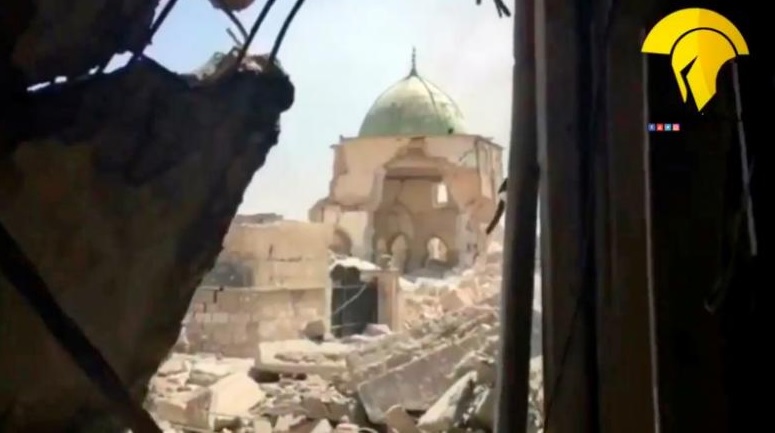MOSUL/ERBIL, Iraq, (Reuters) – After eight months of grinding urban warfare, Iraqi government troops on Thursday captured the ruined mosque at the heart of Islamic State’s de facto capital Mosul, and the prime minister declared the group’s self-styled caliphate at an end.
Iraqi authorities expect the long battle for Mosul to end in coming days as remaining Islamic State fighters are bottled up in just a handful of neighbourhoods of the Old City.
The seizure of the nearly 850-year-old Grand al-Nuri Mosque — from where Islamic State proclaimed the caliphate nearly three years ago to the day — is a huge symbolic victory.
“The return of al-Nuri Mosque and al-Hadba minaret to the fold of the nation marks the end of the Daesh state of falsehood,” Prime Minister Haider al-Abadi said in a statement, referring to the hardline Sunni Muslim group by an Arabic acronym.
The fall of Mosul would in effect mark the end of the Iraqi half of the IS caliphate, although the group still controls territory west and south of the city, ruling over hundreds of thousands of people.
Its stronghold in Syria, Raqqa, is also close to falling.
A U.S.-backed Kurdish-led coalition besieging Raqqa on Thursday fully encircled it after closing the militants’ last way out from the south, the Syrian Observatory for Human Rights monitoring group said.
These setbacks have reduced Islamic State’s territory by 60 percent from its peak two years ago and its revenue by 80 percent, to just $16 million a month, said IHS Markit.
“Their fictitious state has fallen,” an Iraqi military spokesman, Brigadier General Yahya Rasool, told state TV.

However, it still occupies an area as big as Belgium, across Iraq and Syria, according to IHS Markit, an analytics firm.
Islamic State fighters blew up the medieval mosque and its famed leaning minaret a week ago as U.S.-backed Iraqi forces started a push in its direction. Their black flag had been flying from al-Hadba (The Hunchback) minaret since June 2014.
Much of the mosque and brickwork minaret was reduced to rubble, said a Reuters TV reporter who went to the site with the elite units that captured it.
Only the stump of the Hunchback remained, and a green dome of the mosque supported by a few pillars which resisted the blast, he said.
The mosque grounds were off limits as the insurgents are suspected to have planted booby traps.
Abadi “issued instructions to bring the battle to its conclusion,” by capturing the remaining parts of the Old City, his office said.
The cost of the fighting has been enormous. In addition to military casualties, thousands of civilians are estimated to have been killed.
About 900,000 people, nearly half the pre-war population of the northern city, have fled, mostly taking refuge in camps or with relatives and friends, according to aid groups.
Those trapped in the city suffered hunger, deprivation and IS oppression as well as death or injury, and many buildings have been ruined.








